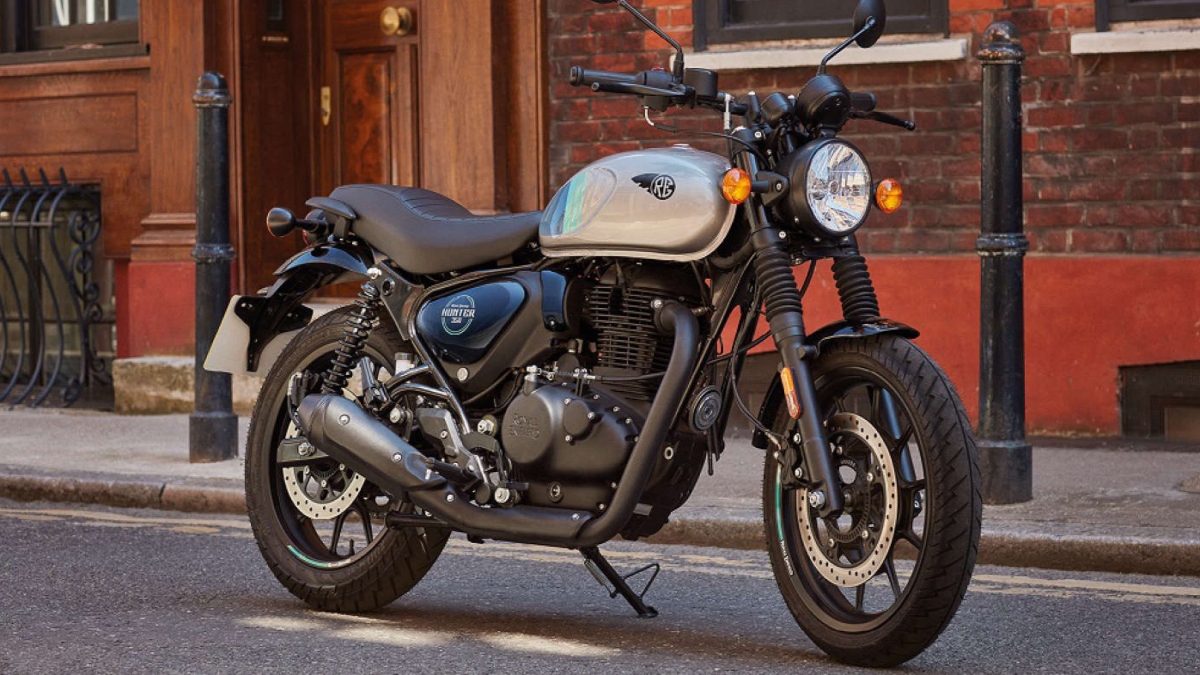


Cult bike-maker Royal Enfield is changing and how. This is very evident from the kind of motorcycles the brand has been launching in the last few years. From being technologically advanced to feature rich, the new bikes are leaving hardly anything to complain about and the latest in line is the Hunter 350, which has just been launched in the market. The company is calling it a ‘two-wheeled double-espresso’ of motorcycling and says it is engineered and designed for the urban hustle, and can tackle crowded city streets, suburban backroads and beyond, with aplomb.


The Hunter is powered by the now popular 349cc air-oil cooled single cylinder J-series engine, recently launched on the Meteor and Classic 350.
DESIGN
Clearly, the Hunter 350 is a bike where old school analogue meets new age vibes. It comes in two editions —Retro Hunter and Metro Hunter—both finished with blacked-out engines and components. The Retro Hunter runs on 17” spoked wheels and has a 300mm front disc brake combined with a 6” rear drum brake, single channel ABS, a retro-styled digital-analogue instrument cluster and a choice of two classical, single-colour tanks.
The Metro Hunter has a more contemporary look with dual-colour liveries, cast alloy wheels, wide tubeless tyres, and rounded rear lights. There are five colourways across two editions on the Metro Hunter. There are three tank colour and graphics options on one edition, and the top of the range edition is finished with a choice of three unique petrol tank designs. The bike is also compatible with Royal Enfield’s Tripper TBT navigation but that is available to order as an accessory.
Both Metro editions are equipped with alloy wheels and wider rear tubeless tyres for superior handling. They get 300mm front and 270mm rear disc brakes, dual channel ABS, and a centrestand. The bike also gets an LED tail lamp and digital-analogue instrument cluster that displays odometer, tripmeter, gear indicator, fuel graph bar with low fuel warning, clock and a service reminder. The bike gets rotary power and lighting switches giving a gentle nod to the past and are fitted with a USB charging port.
ENGINE
The Hunter is powered by the now popular 349cc air-oil cooled single cylinder J-series engine, recently launched on the Meteor and Classic 350. Fuel-injected, it produces 20.2 bhp at 6100 rpm and 27Nm of torque at 4000rpm resulting in strong, low-end grunt, super smooth linear power delivery. The idea is to give a lively throttle response and a distinctive exhaust note to suit the character of the Hunter. To cut down vibrations, a primary balancer shaft has been used, while gear shifting is crisp and smooth thanks to an optimised 5-speed gearbox. The Hunter 350 is built on the 350cc J-series platform, combined with a Harris Performance chassis, this according to the brand helps the bike deliver agility without fragility on city streets and an equally pleasurable ride on the open road. Royal Enfield says, the chassis geometry on the motorcycle is designed to give the optimal height-to-weight ratio while offering superior comfort, thanks to its wide, long, one-piece seat. With revised rake and trail angles, a lower 790 mm seat height and shorter wheelbase, the bike’s manoeuvrability encourages greater confidence when carving through cramped streets and it feels planted and stable.
PRICES
The Hunter is now available for bookings in India while the test rides and retails have also begun. It starts at Rs 1,49,900 and goes up to Rs 1,68,900 (ex-showroom). The bike will also be launched across key markets in the Asia Pacific before the end of this year, with Europe and the Americas following in during the first quarter of the next year. You can also choose from a host of accessories on the Hunter, these include engine and sump guards, pannier mounts and luggage, custom seat and touring mirrors. Some other options are a signature bench seat, black LED indicators, a tinted flyscreen and a minimalist ‘tail tidy’ rear end.
The author is a senior editor at carandbike.com.